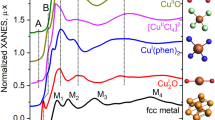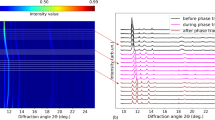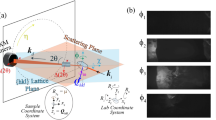Abstract
Although the Fourier method of synthesis has enjoyed a long and justified supremacy in the armoury of techniques for X-ray structure analysis, the time is rapidly approaching when its use will be limited by the complexity of the structures investigated. In the absence of any universally applicable method of obtaining phase angles, Fourier refinement can be applied only to those structures which are sufficiently simple for an accurate estimate of their parameters to be made. It is an unfortunate fact that the Fourier refinement process converges only if the trial parameters are reasonably close to the true ones, and the region of convergence is roughly that of the differential method1.
This is a preview of subscription content, access via your institution
Access options
Subscribe to this journal
Receive 51 print issues and online access
$199.00 per year
only $3.90 per issue
Buy this article
- Purchase on SpringerLink
- Instant access to full article PDF
Prices may be subject to local taxes which are calculated during checkout
Similar content being viewed by others
References
Booth, A. D., Trans. Farad. Soc., 42, 617 (1946).
Wrinch, D., "Fourier Transforms and Structure Factors" (A.S.X.R.E.D., 1946).
Perutz, M., Nature, 149, 491 (1942).
Author information
Authors and Affiliations
Rights and permissions
About this article
Cite this article
BOOTH, A. Application of the Method of Steepest Descents to X-Ray Structure Analysis. Nature 160, 196 (1947). https://doi.org/10.1038/160196a0
Issue date:
DOI: https://doi.org/10.1038/160196a0
This article is cited by
-
A new mathematical approach to finding global solutions of the magnetic structure determination problem
Scientific Reports (2018)
-
Method of Steepest Descents in X-Ray Analysis
Nature (1949)
-
A Mechanical Calculating Machine for X-Ray Structure Factors
Nature (1949)
-
Method of Steepest Descents : Improved Formula for X-Ray Analysis
Nature (1948)
-
The Fourier Method of Crystal Structure Analysis
Nature (1948)



